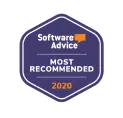Now, more than ever, you need a recruitment strategy.
What are business leaders most concerned about in 2022 and beyond? Well, understandably, pandemic-related regulations and market conditions are an immediate concern. But after that, they’re primarily concerned with attracting and retaining top talent.
A survey conducted by Protiviti and NC State University finds that “nearly all organizations we surveyed are facing talent challenges and shortages. Looking ahead to 2031, business leaders cite workforce and talent-related issues as their primary concern.”
Whether your company has 10 employees or 1,000, talent acquisition should be top of mind for you. This means a recruitment strategy is a must-have. It was true before the pandemic and the “great resignation,” and it will be true for years to come.
A recruitment strategy is nothing more than a plan of action that enables you to achieve your hiring goals. If your goals include hiring A-player as soon as humanly possible, you definitely need a recruitment strategy. And while hiring, in general, is a difficult undertaking, your recruiting plan doesn’t have to be. I’ll be walking through some basic steps for you.
Let’s face it, hiring is hard
If you’re a small or midsize company with big plans for growth, you already know that hiring the right people to grow your business is one of the most difficult challenges you will face as a business owner.
Shaun P. Martin, a software engineer turned hiring guru and author, had a difficult transition from engineering to hiring. “When I became an executive, I thought that hiring would be the easiest thing,” Shaun recalls. “And like Wile E. Coyote, I ran flat into that brick wall.”
In his book, “Hack Your Hiring: The Tactical Playbook to Find, Evaluate and Hire A+ Talent,” Shaun surmises that poor hiring results are actually symptoms of a bigger problem: A broken recruiting machine. “The good news is,” according to Shaun, “fixing the machine is a lot easier than you think, and it’s all within your control as a leader.”
Are you both CEO and chief hiring officer?
Do you ever find yourself in the middle of the hiring process with a hopeful candidate and you’re looking at the pros and cons of hiring the person? They made a great impression, you liked them but there are these red flags that give you pause. You know that this decision will make or break your next 90 days
Your business has grown and continues to grow. You have been the chief hiring officer but you can’t do it all. The old hiring systems and processes you’ve used in the past are not working anymore. You would delegate, but you know your office manager or low-level HR manager is not able to screen, interview and select great people the way you are.
Your department heads and leaders grew up with you. They are your key lieutenants but no one has taught them how to interview effectively In fact, no one has ever taught you how to interview. Your intuition has served you well so far but you can’t be the one making all the hiring decisions anymore. To top it off your own track record is not as good as you would like it to be.
You have implemented systems and processes throughout your company. It feels like a well-oiled machine but your talent acquisition, candidate selection, and hiring process seem like the wild wild west with no consistency and no one does it as well as you do.
Maybe you have tried implementing Top grading but your team just doesn’t quite get it or maybe they resist doing it properly.
Ideally, you would like to have a process that is repeatable, measurable, easy to manage, inspect, and most importantly helps you hire more A++++ players.
“Great Resignation” or “Great Talent Recession?”
A report by Management Consulting firm Korn Ferry finds that by 2030, “more than 85 million jobs could go unfilled because there aren't enough skilled people to take them. Left unchecked, in 2030 that talent shortage could result in about $8.5 trillion in unrealized annual revenues.”
In the United States, we could be looking at a deficit of more than 6 million workers. In technology alone, “the US could lose out on $162 billion worth of revenues annually unless it finds more high-tech workers.”
As Adrian Wooldridge at Bloomberg sees it, “America is facing a Great Talent Recession.” Despite a better than expected jobs report, employers across the country are having a tougher time finding the workers they need.
I don’t mean to alarm you with this data, but I do mean to reinforce the point that having a recruitment strategy is really important, and my goal for you is to stay competitive in the war for talent.
Having a strategy reduces employee turnover
The very best talent can be worth millions of dollars to your business. Your ability to hire top performers can drive your company’s success.
On the other hand, a single mis-hire can cost your company. Employee turnover can cost 30% or more of the employee’s salary. A survey conducted by CareerBuilder, on the Cision PR Newswire, found that three in four companies admitted that their business was negatively affected by hiring the wrong person. Overall productivity was reduced, and time was wasted trying to recruit and train a replacement.
With a results-based recruitment strategy, you can locate the hard-to-find candidates who are a better fit for your company. These are the people who may be inspired to stay and grow with your company, helping you achieve your present and future business goals.
Recruiting strategies evolve with the times
Whether or not your business has a recruitment strategy, it may be time to take a fresh look at how you’re discovering and attracting talent today. Gartner, the respected research company, says that “recruiting strategies are becoming outdated.”
According to Gartner, “evolving skill needs are among the large-scale shifts currently underway in the workplace and labor market, and traditional recruiting strategies can’t keep up.”
Gartner identifies 3 key shifts in recruiting strategy that will be required to hire quality talent today:
- Define talent needs by prioritizing outcomes vs. skills
- Source talent more broadly
- Create responsive employment value propositions
Gartner estimates that “recruiting functions that excel in this will see a 24% increase in the quality of hires.”
Your recruitment strategy can grow your network
In a post on the LinkedIn Talent Blog, Sarah A. Lybrand builds a strong case for a recruitment strategy. In her article, she explains that recruitment is not only an important business strategy. It’s the most important.
“An airtight recruitment process at your company can help you hire employees quickly, efficiently, and ahead of your competition,” writes Lybrand. “Done well, the process of finding quality candidates will grow your network, open many opportunities, and help you be successful.”
In her article, Sara outlines four tips for boosting your recruitment strategy:
- Increase your employee marketing budget
- Challenge traditional thinking
- Use Attraction Marketing
- Use smart sourcing tools and technologies
Some questions to consider before you begin
Before you identify your target candidates and begin your talent search, there are some key questions you should answer before moving forward.
First of all, when do you need these people, and what is your timeline for discovering, processing, and getting your new hires protruding results?
What resources will you need in your search? Do you have a budget to market jobs? Do you need to dedicate recruiters or hiring managers to this effort?
How will you measure results from your efforts? What kind of ROI are you looking for? Remember, recruiting should be looked at as a revenue-generating act, not an administrative compliance task.
Do you need to sell this plan to company leadership? If you need buy-in and/or budget approval, you should get this as soon as you can.
Why is it important for this hiring effort to be a success? How does it support your company’s mission and how will it help to make your vision a reality?
Start with the FACTs
My approach to discovering and hiring talent is FACT-driven. By recruiting A-players based on facts, you will increase diversity, enhance employee knowledge and clearly define your company’s goals.
- Create the Framework to discover ideal candidates.
- Discover how to Attract talent. Quickly. Effectively.
- Evaluate the Candidates you’ve discovered.
- Train and onboard your new discoveries.
Right now we’re going to look at creating the framework because the framework is your recruitment strategy. First, we create the plan, then we put it into action.
Formulate your plan of “attract.”
Begin by formulating a clear vision of who you are trying to attract and what they are going to do for your business. It’s an in-depth analysis of the position, a step that’s often overlooked by companies when developing job descriptions. This is where you ask yourself, “who exactly am I looking for?”
What are the qualities, skills, and experiences needed to achieve the results that will drive your company forward?
How does this position impact the mission of the company, and how will the company’s core values play out in the day-to-day responsibilities of the role?
What are the outcomes expected from someone in this role?
Based on your analysis of the position, create a job description that captures the essence of the role, and does it in a SMART way, as in Specific, Measurable, Actionable, Realistic, and Time-bound.
Next, build a candidate profile that outlines who your ideal candidate is. If you’re familiar with buyer personas in marketing, it’s like that, but instead of customers, your buyers are candidates. From this, put together a candidate scorecard to measure and assess potential discoveries.
Then, create a winning job advertisement that will attract the right candidates to your job.
A job advertisement tells a story. It gives your ideal candidate something to get excited about.
It describes your company culture. It talks about the candidate’s opportunity to grow their career and stretch their skills. And it paints a clear picture of a day in the life of someone in this job and how it impacts the company.
Use all the channels to attract your candidates
After you create your job advertisement, reach out to your network for referrals. If you already have a solid team of talented employees, chances are they know other talented people who may be looking for — or might be interested in hearing about — a new opportunity. Getting referrals from your network, colleagues, and top employees is a great way to start attracting the best talent for your business.
Before sending your job ad out, make sure it speaks to your candidate’s desires, needs, and goals regarding the opportunity. It has to be all about them and what they stand to gain from this new experience. In a tight labor market, candidates want to know what they may get out of the opportunity. They’re not interested in hearing all about your demands. Don’t get me wrong, you are important too, but when it comes to a job ad, you should keep it all about the candidate.
Once you have a solid job advertisement that’s written to get the very best applicants excited about the job and you have leveraged your network, we can start exploring other channels, like job boards, headhunting and recruitment search partners, along with other techniques for finding great candidates to build your talent pipeline.
Build your talent pipeline, select winning candidates
One of the things I like to do for clients is showing them how simple it really can be to hire talented team members once you’ve built a pool of candidates. I walk them through a 5-step process that can help them hire great candidates in only 10 days:
- Step 1: Screening Interview
- Step 2: Pre-hire assessments
- Step 3: Reference checks
- Step 4: Career history interview
- Step 5: Working interview
Keep in mind that the first part, as in attracting candidates to build your pipeline, can take a lot longer than 10 days. But the more planning you do upfront, the quicker you’ll be seeing results and building your talent pipeline.
Make the right hires with a smart strategy
There’s a big difference between getting a bunch of candidates and getting the candidates you need to make the right hires. Hiring the right people can make all the difference for your business. Because one wrong move can really cost you, and it can damage your company.
Following a strategic plan for identifying, attracting, and hiring your ideal candidate is necessary for a successful, long-term hire. It all starts with knowing your target audience. If you spend some time upfront thinking about who your ideal candidate is, discovering them will be a whole lot easier.






